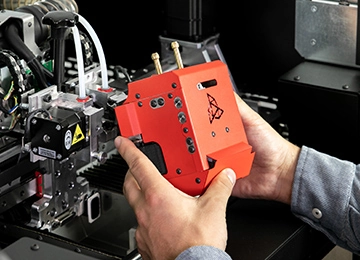Manual
Firmware
Software
Useful terms
FAQ
Guarantee terms and conditions
3DGENCE SLICER
-
Bridge
A part of model printed in the air, suspended between two parts of the print. It is subject to special calculations while preparing the file for printing. If the bridge is too long, it may be subject to deformation. In such cases this component should be supported with support structures.
-
Autocompensation
Consists in a single-point measurement of the distance to bed and determining a correct distance to start a job. This process takes place each time before printing. After setting a correct height over a single point, further part of the print will be performed by taking into account the table curve pattern stored in the printer memory – thanks to this, the distance between the nozzle and working table is always the same and corrected in Z-axis on a continuous basis.
-
ABS
Poly acrylonitrile butadiene styrene – apart from PLA one of the main materials for 3D printers. Features a high impact strength, hardness and resistance to scratching. It is not resistant to UV radiation. Soluble in acetone, which allows for post-processing of prints by using the acetone vaporizing method. ABS prints can also be glued together with ABS solved in acetone. ABS features a fairly significant thermal shrinkage (up to 0.7%). The typical operating temperature for ABS is 220 to 250 Celsius degrees and about 100 Celsius degrees for the bed. The heated working space is necessary to maintain dimensional compatibility for printed items.
-
Adhesion
In the 3D print context it means the adhesion to the device bed. Insufficient print adhesion can result in partial or complete tear of the print from the table during printer operation. The ceramic table of the 3DGence printers provides a good adhesion for the certified materials, however for hard to print plastics there is a lot of commercial solutions available for improving adhesion of the print to the bed. Grease or soiling on the table has a negative impact on adhesion.
-
Autocalibration
A printer capacity to perform an automated bed calibration. This process is designed to generate curve and irregularity maps for the working table and by introducing dynamic corrections it provides a constant height of the nozzle over the bed. It usually takes from a few to several dozen minutes, and necessary user operations are reduced to starting the process by using an appropriate command.
Brak na supporcie ?
Lorem ipsum

